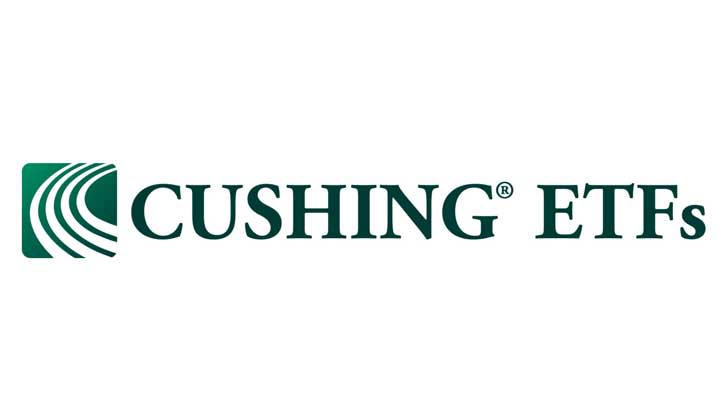5 Oil ETFs for Rising Prices
After ranking as one of last year’s worst-performing commodities and sectors, oil and the energy sector are rebounding to start 2019. Among exchange-traded funds (ETFs), the United States Oil Fund (NYSEARCA:USO), one of the most heavily traded oil ETFs, is up more than 20% year-to-date.
The Energy Select Sector SPDR (NYSEARCA:XLE), the dominant name among equity-based oil ETFs, is up 12% this year, aided by big earnings tests. On Friday, Exxon Mobil (NYSE:XOM) and Chevron (NYSE:CVX) reported fourth-quarter earnings beats. The two largest U.S. oil companies combine for anywhere from 35% to 40% of cap-weighted oil ETFs like XLE.
Additional data points confirm that oil ETFs are experiencing early year bullishness. The commodity snapped a three-month losing streak last month and notched its best January performance ever.
InvestorPlace - Stock Market News, Stock Advice & Trading Tips
Recently, the price of crude oil was supported by news of Saudi Arabia cutting imports to the U.S. and the U.S. imposing new sanctions on Venezuela. Both Saudi Arabia and Venezuela are members of the Organization of Petroleum Exporting Countries (OPEC).
With all that, here are some the best oil ETFs to consider over the near-term.
VanEck Vectors Oil Services ETF (OIH)

Expense Ratio: 0.35% per year, or $35 on a $10,000 investment.
Among equity-based oil ETFs, oil services funds, such as the VanEck Vectors Oil Services ETF (NYSEARCA:OIH), are among the most intimately correlated to oil prices. That explains why OIH is up nearly 22% this year and why the largest oil services fund plunged 44.6% last year.
The U.S. shale boom has been a key driver of oil services stocks’ profitability in recent years and any slowdown on that front could be a headwind for the group. Fortunately, the geopolitical drama in Venezuela is not seen as a headwind for oil services ETFs.
“Longer-term, Venezuelan production, however, may score a significant boost if opposition leader Juan Guaidó succeeds in his claim to the presidency. That would contribute more oil to world-wide supplies,” according to MarketWatch.
Like other cap-weighted oil ETFs, OIH has some concentration risk. The fund devotes almost 36% of its combined weight to just two stocks: Schlumberger (NYSE:SLB) and Halliburton (NYSE: HAL).
Fidelity MSCI Energy ETF (FENY)

Source: Shutterstock
Expense Ratio: 0.084%
As has been widely documented, Fidelity is one of the low-cost leaders in the ETF arena. In fact, the issuer offers the least expensive lineup of sector ETFs, a group that includes the Fidelity MSCI Energy ETF (NYSEARCA:FENY).
FENY is a basic, cap-weighted oil ETF and, like the aforementioned XLE, this Fidelity fund features significant exposure to Exxon and Chevron. Those stocks combine for almost 37% of FENY’s roster. Exxon is in the midst of a major reorganization aimed increasing efficiencies and profits.
“The reorganization will fold seven companies into three as of April 1, merging units for production, exploration, development, gas and power marketing, and others,” according to Reuters.
Invesco Dynamic Energy Exploration & Production ETF (PXE)

Source: Shutterstock
Expense Ratio: 0.65%
The Invesco Dynamic Energy Exploration & Production ETF (NYSEARCA:PXE) uses a unique weighting methodology relative to other oil ETFs.
The Dynamic Energy Exploration & Production Intellidex Index, PXE’s underlying benchmark, “thoroughly evaluates companies based on a variety of investment merit criteria, including: price momentum, earnings momentum, quality, management action, and value,” according to Invesco.
Those stringent indexing requirements give PXE a roster of 30 stocks, which is small compared to traditional oil ETFs like FENY and XLE. When oil prices are rising, PXE’s methodology works, as highlighted by a 2019 gain of almost 13%.
Global X MSCI China Energy ETF (CHIE)

Expense Ratio: 0.65%
Tactical investors looking for international exposure with oil ETFs may want to consider the Global X MSCI China Energy ETF (NYSEARCA:CHIE). As the world’s second-largest economy, China is a major oil consumer and producer. On a related note, China is also home to some of the world’s largest integrated oil companies. CHIE reflects as much, as the top three such companies combine for over 28% of this oil ETF’s weight.
“Chinese sectors have their own unique fundamentals relative to each other and their U.S. counterparts,” according to Global X research. “The prevalence of state ownership in certain sectors is the likely cause of this feature, particularly among the Financials, Energy, Industrials, and Utilities sectors. Other factors include changing demographics as well as the composition of the Chinese market from both a sector and industry perspective.”
CHIE is up nearly 8% year-to-date.
Cushing Energy & MLP ETF (XLEY)

Expense Ratio: 0.65%
The Cushing Energy & MLP ETF (NYSEARCA:XLEY) is one of the newest oil ETFs, having debuted in December. This new oil ETF offers a mix of traditional energy stocks as well as high-yielding master limited partnerships (MLPs).
To avoid some of the tax issues associated with dedicated MLP funds, XLEY allocates 76% to S&P 500 energy and oil stocks and 24% to MLPs.
While XLEY features many of the names found in traditional oil ETFs, the fund does not allocate more than 6.08% to any of its holdings, indicating its concentration risk is benign relative to more traditional counterparts. XLEY is up 15% year-to-date and could prove to be a useful avenue for income-focused investors seeking energy exposure this year.
As of this writing, Todd Shriber does not own any of the aforementioned securities.
More From InvestorPlace
The post 5 Oil ETFs for Rising Prices appeared first on InvestorPlace.
